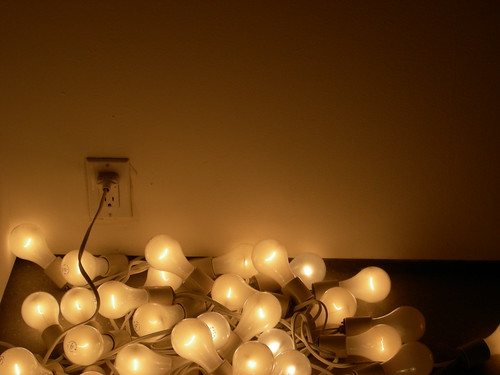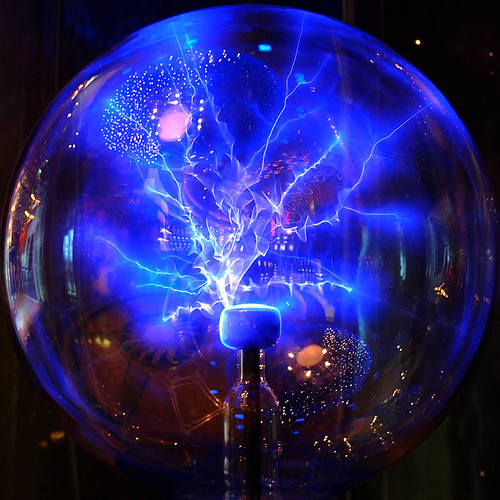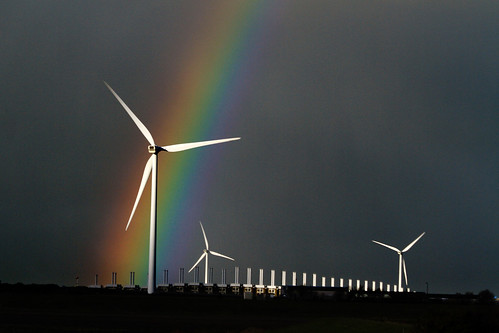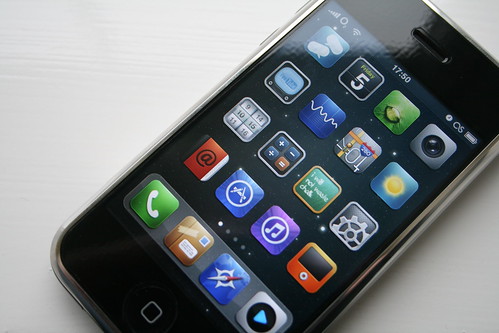| Share Presentation: https://NeoK12.com/pres/ZELECTR2 | |
|
Electricity is the set of physical phenomena associated with the presence and flow of electric charge. Electricity gives a wide variety of well-known effects, such as lightning, static electricity, electromagnetic induction and the flow of electrical current. In addition, electricity permits the creation and reception of electromagnetic radiation such as radio waves.
Lightening is an atmospheric discharge of electricity that typically occurs during thunderstorms. A bolt of lightning can carry an electric current of 30,000 to 300,000 Amperes, and it can reach temperatures of up to 30,000 degrees Celsius. | ||||
|
| ||||
|
The movement of electric charge is known as an electric current, the intensity of which is usually measured in amperes. Current can consist of any moving charged particles; most commonly these are electrons, but any charge in motion constitutes a current. By historical convention, a positive current is defined as having the same direction of flow as any positive charge it contains, or to flow from the most positive part of a circuit to the most negative part. Current defined in this manner is called conventional current. The motion of negatively charged electrons around an electric circuit, one of the most familiar forms of current, is thus deemed positive in the opposite direction to that of the electrons. However, depending on the conditions, an electric current can consist of a flow of charged particles in either direction, or even in both directions at once. The positive-to-negative convention is widely used to simplify this situation. | ||||
|
The process by which electric current passes through a material is termed electrical conduction, and its nature varies with that of the charged particles and the material through which they are travelling. Examples of electric currents include metallic conduction, where electrons flow through a conductor such as metal, and electrolysis, where ions (charged atoms) flow through liquids. While the particles themselves can move quite slowly, sometimes with an average drift velocity only fractions of a millimeter per second, the electric field that drives them itself propagates at close to the speed of light, enabling electrical signals to pass rapidly along wires. | ||||
|
In engineering or household applications, current is often described as being either direct current (DC) or alternating current (AC). These terms refer to how the current varies in time. Direct current, as produced by example from a battery and required by most electronic devices, is a unidirectional flow from the positive part of a circuit to the negative. If, as is most common, this flow is carried by electrons, they will be travelling in the opposite direction. Alternating current is any current that reverses direction repeatedly; almost always this takes the form of a sine wave. Alternating current thus pulses back and forth within a conductor without the charge moving any net distance over time. | ||||
| New York City by night
Electricity powers a large number of animated neon and LED signs and billboards that light up the famous Times Square, a major intersection in Manhattan. | ||||
|
Environmental concerns with electricity generation have led to an increased focus on generation from renewable sources, in particular from wind and hydro-power. While debate can be expected to continue over the environmental impact of different means of electricity production, its final form is relatively clean. | ||||
|
Produce about 24 percent of the world's electricity and supply more than 1 billion people with power. It is the most widely used form of renewable energy that produces power through use of gravitational force of falling or flowing water. | ||||
|
| ||||








